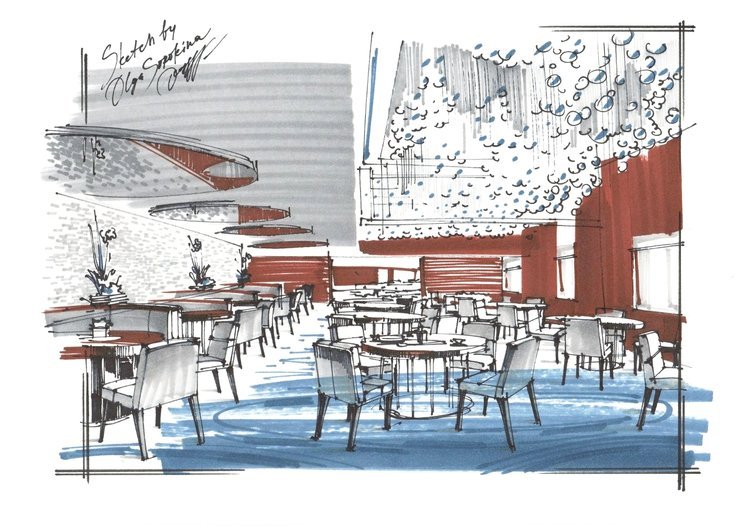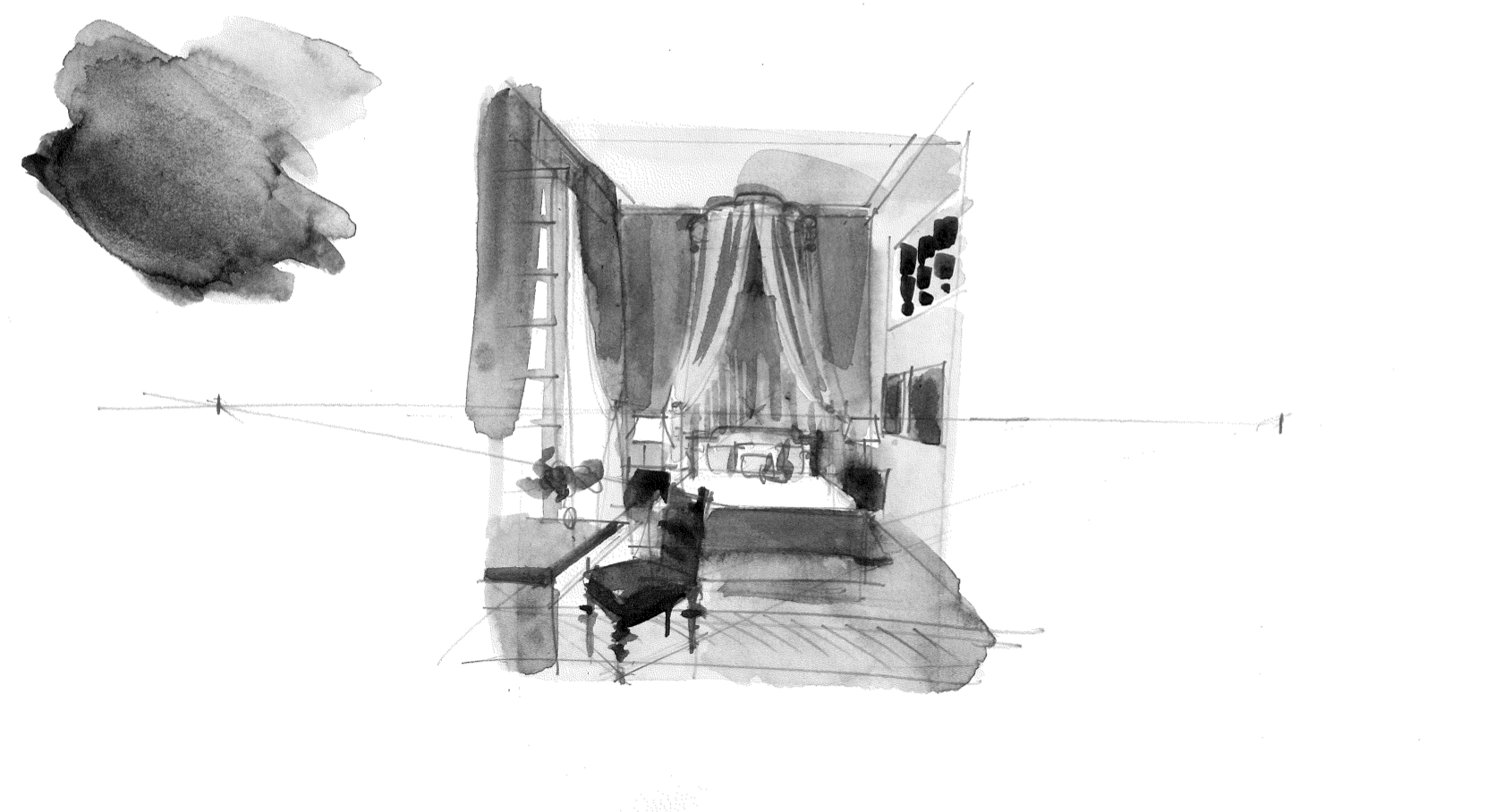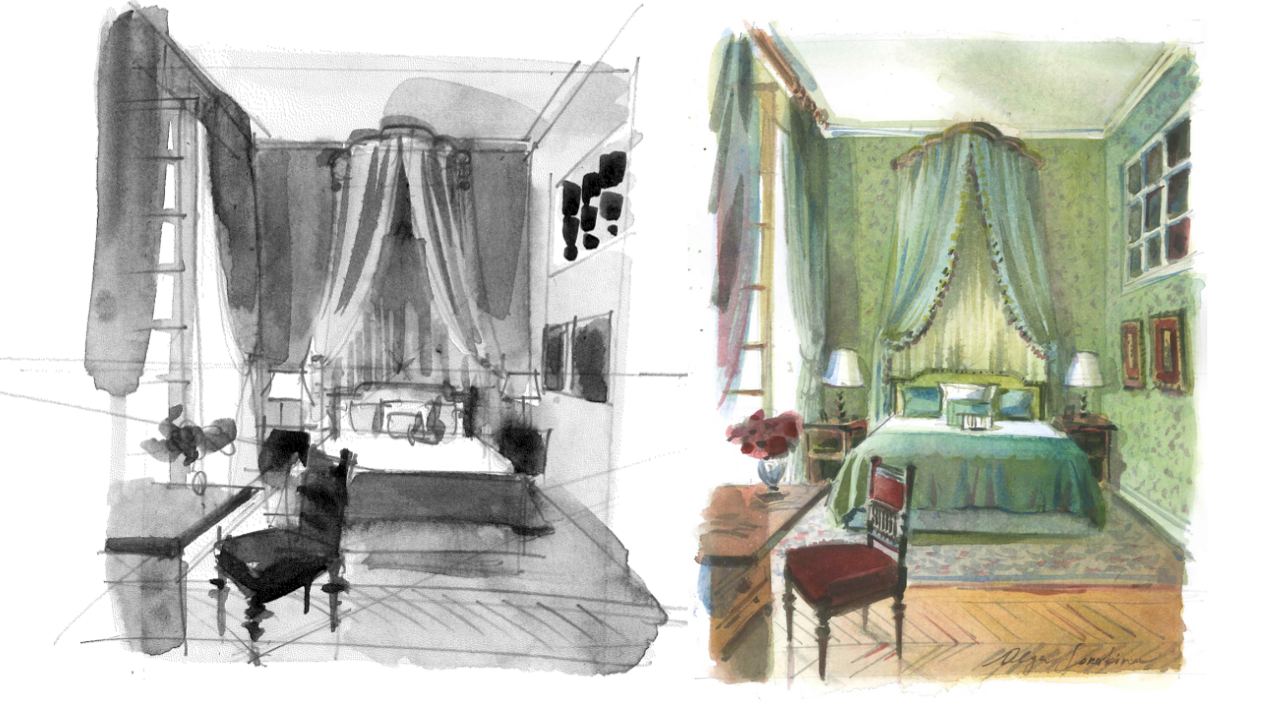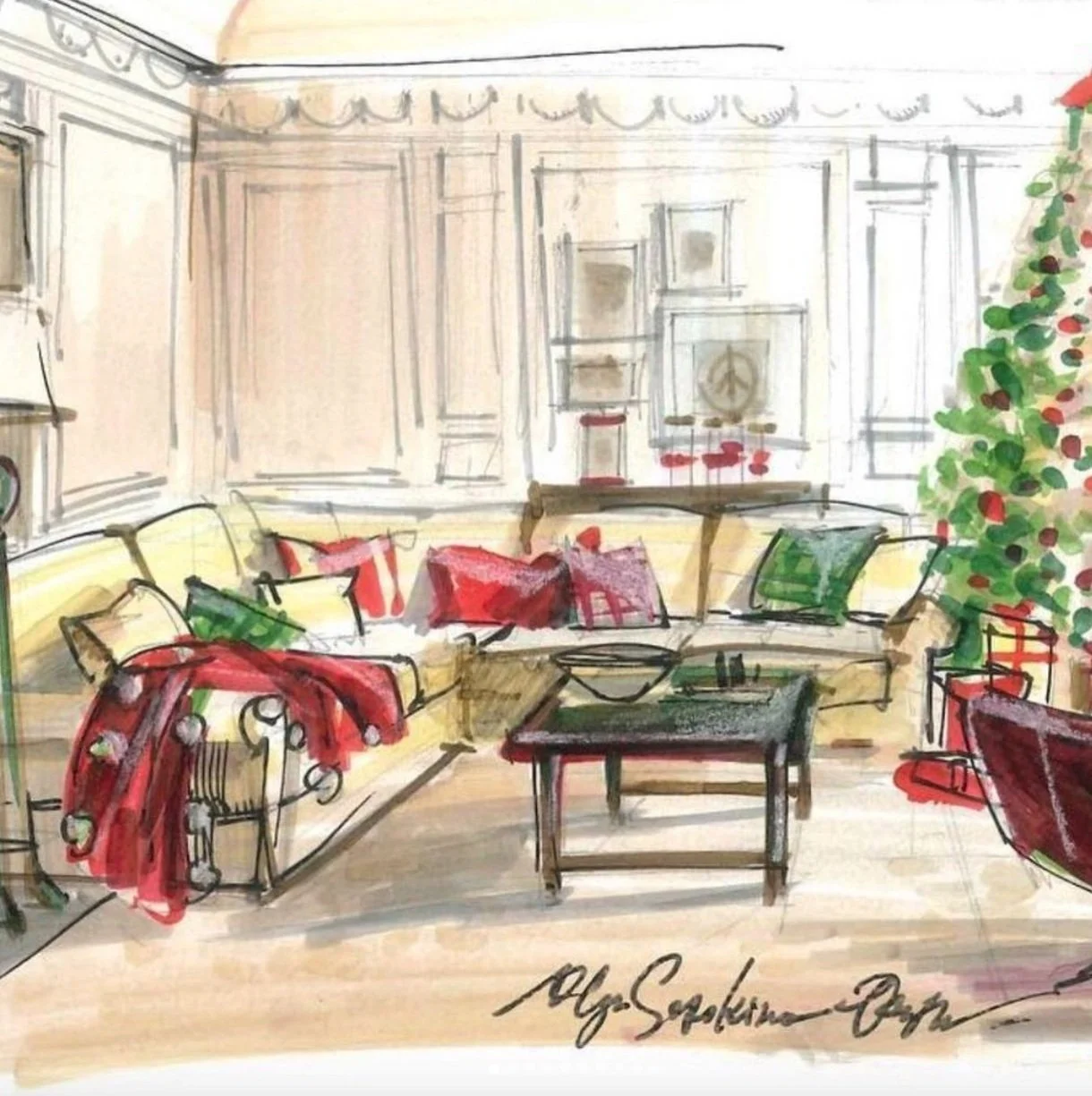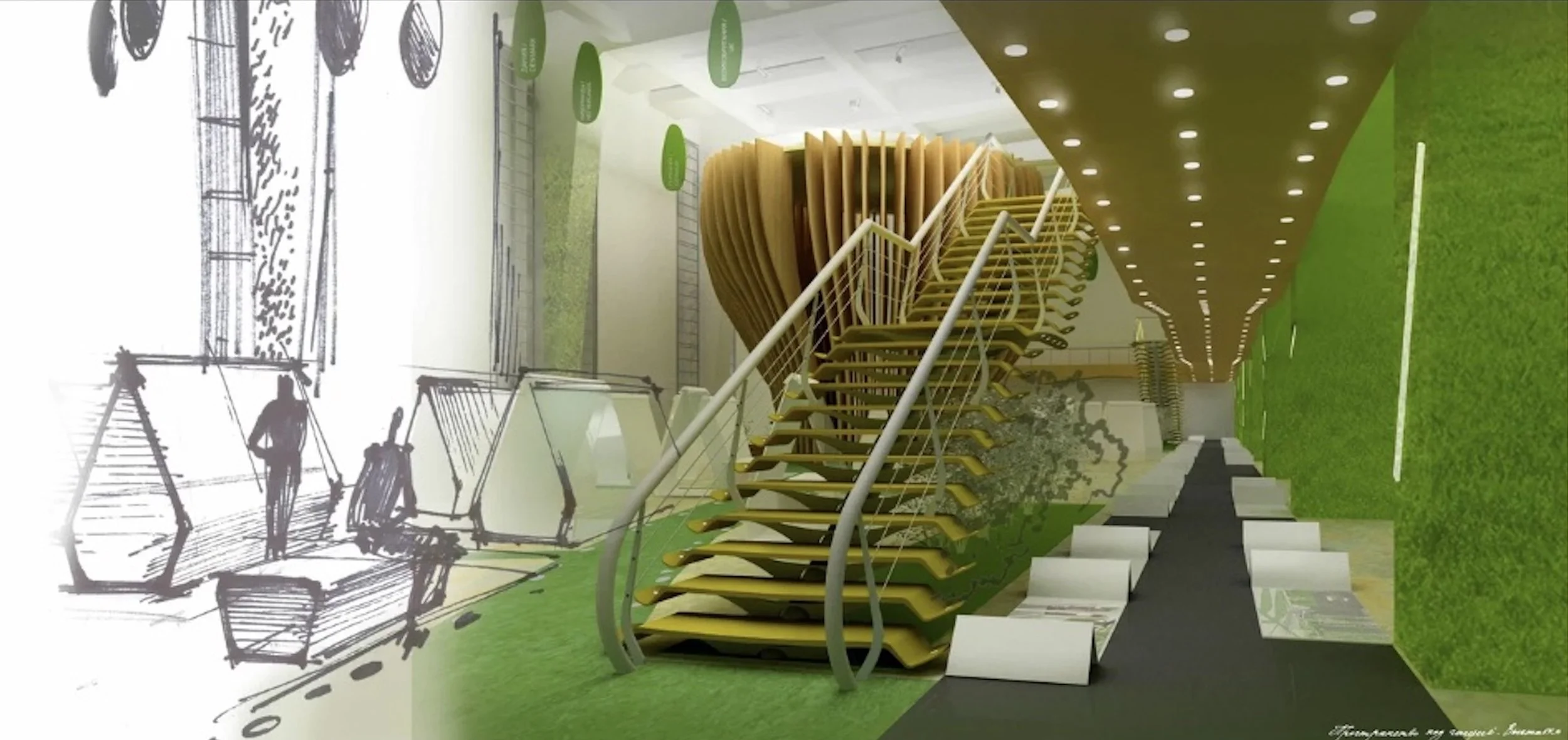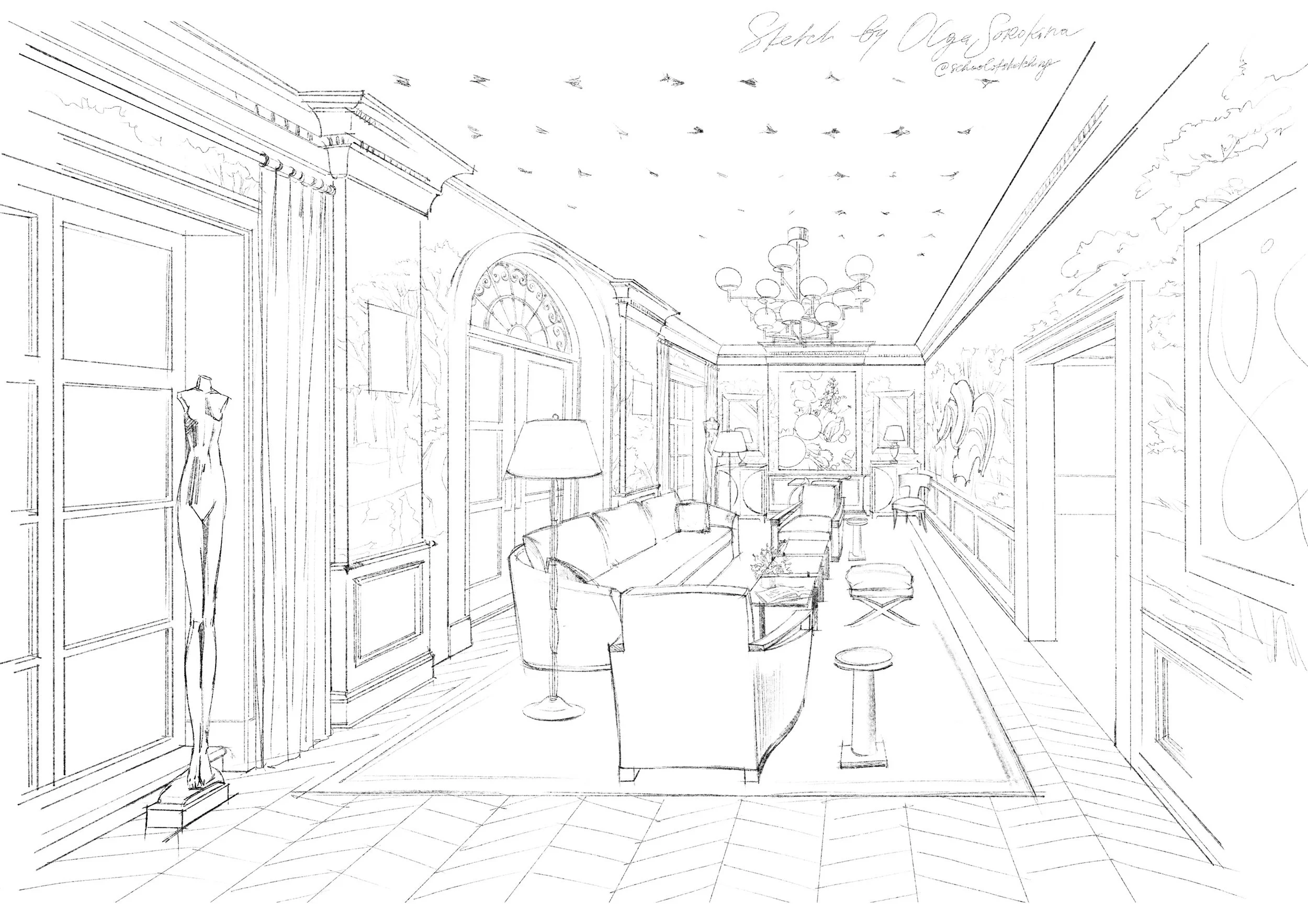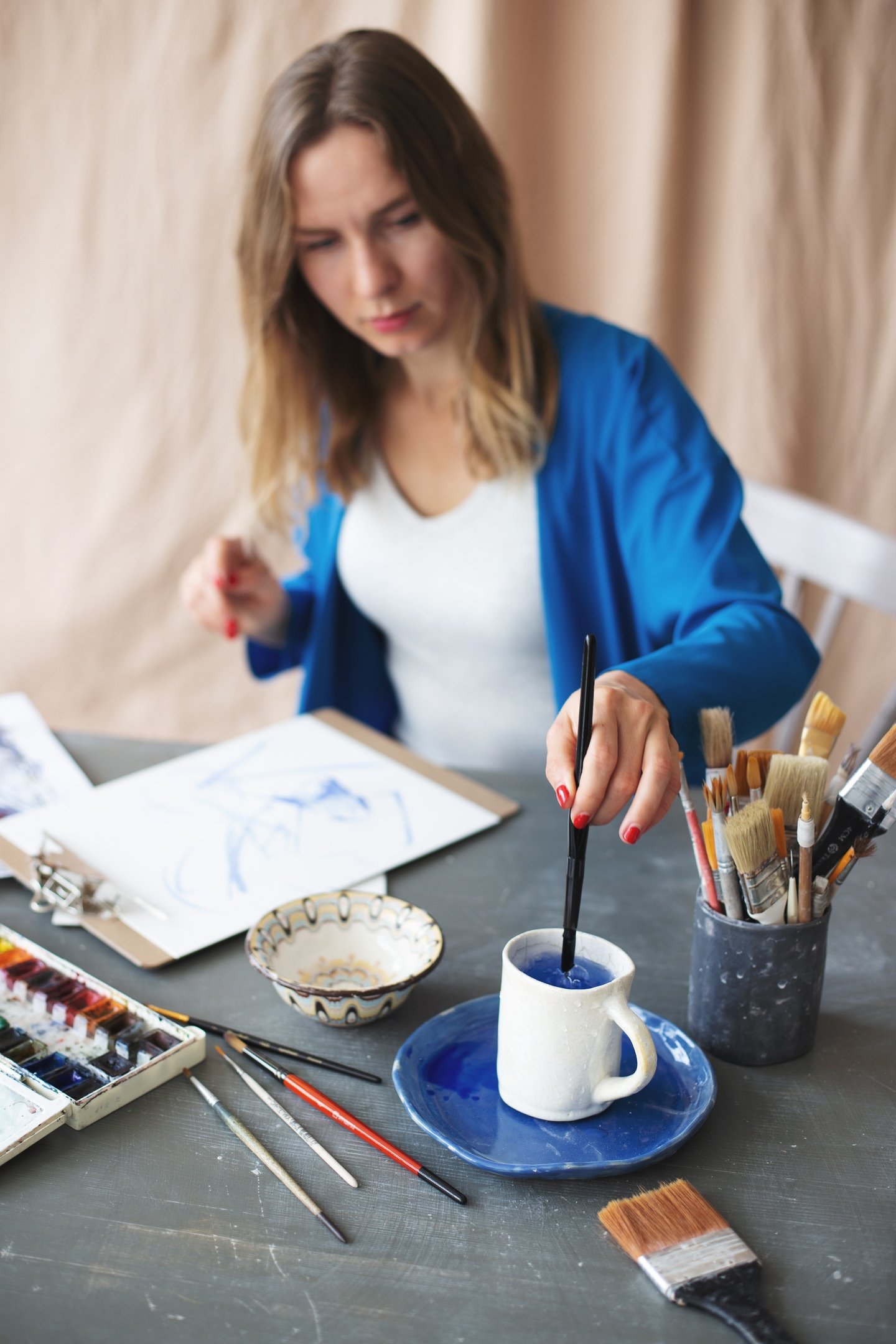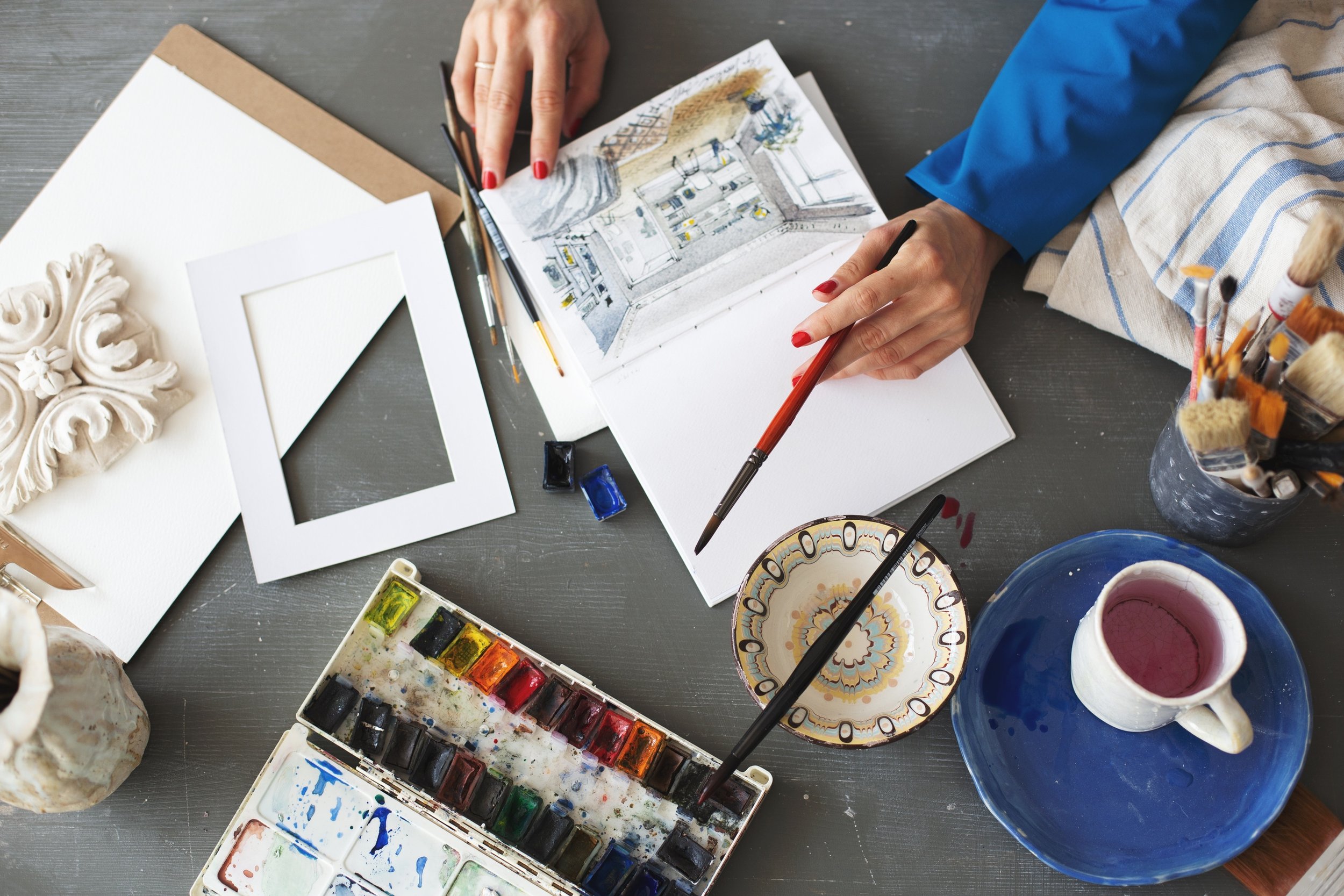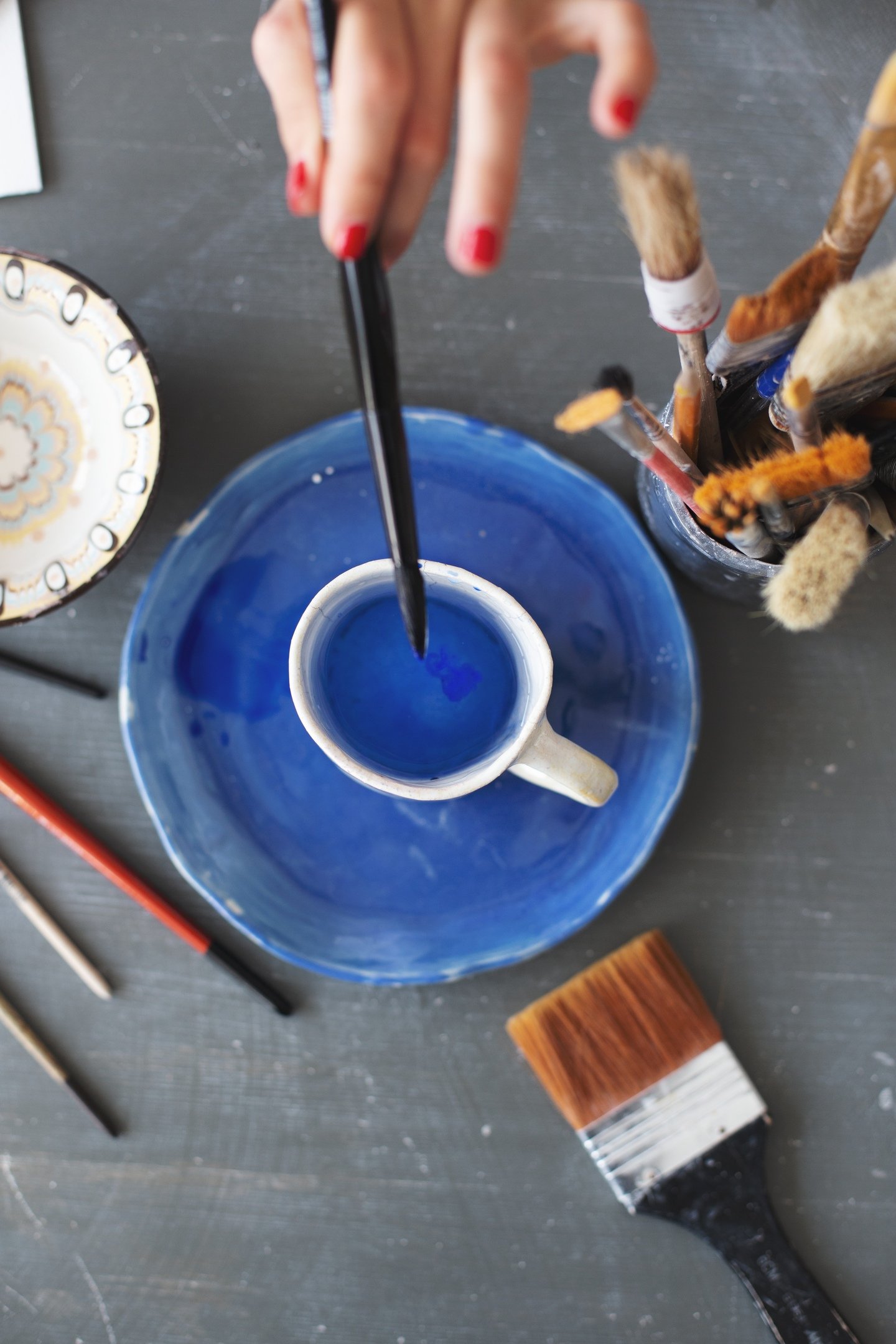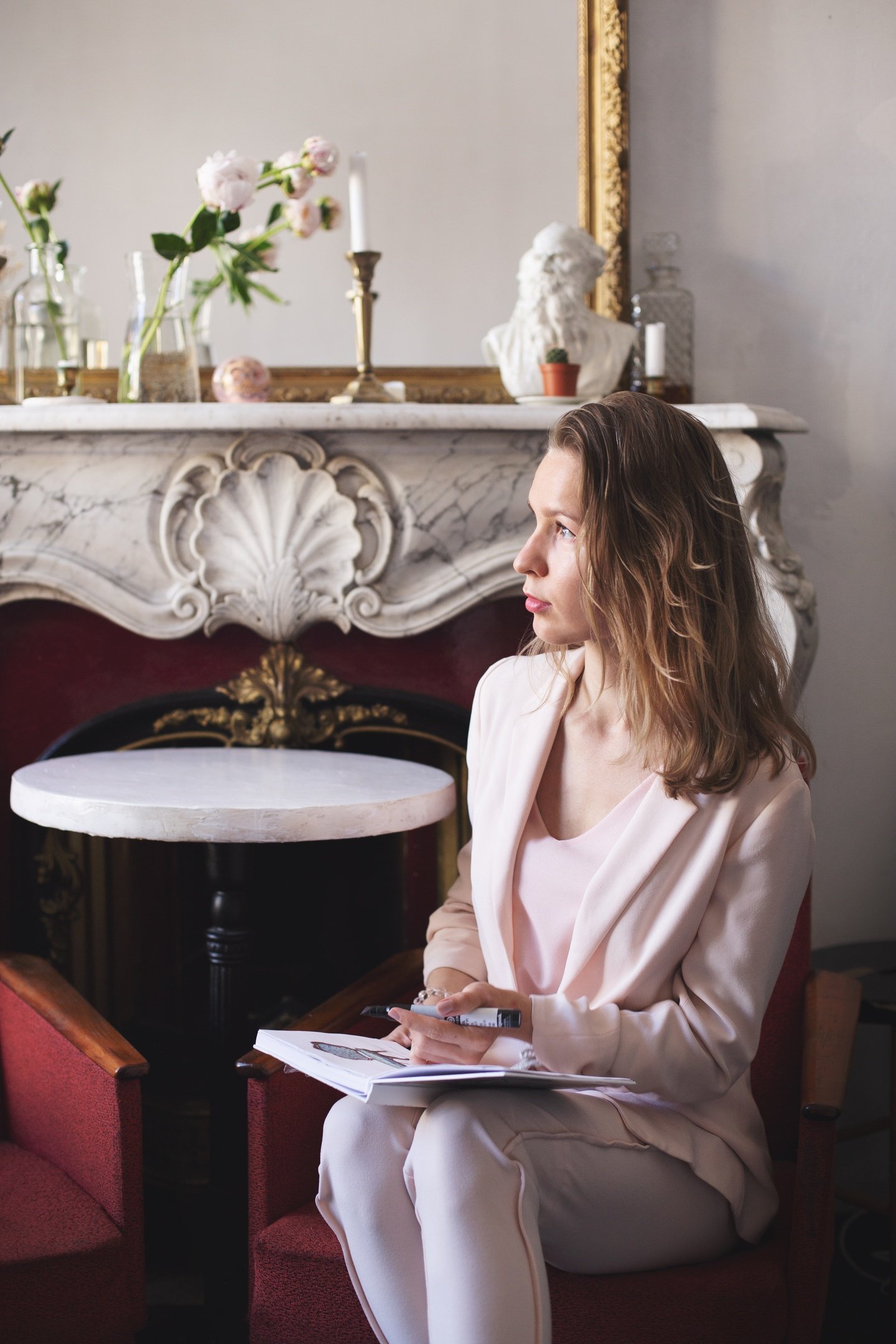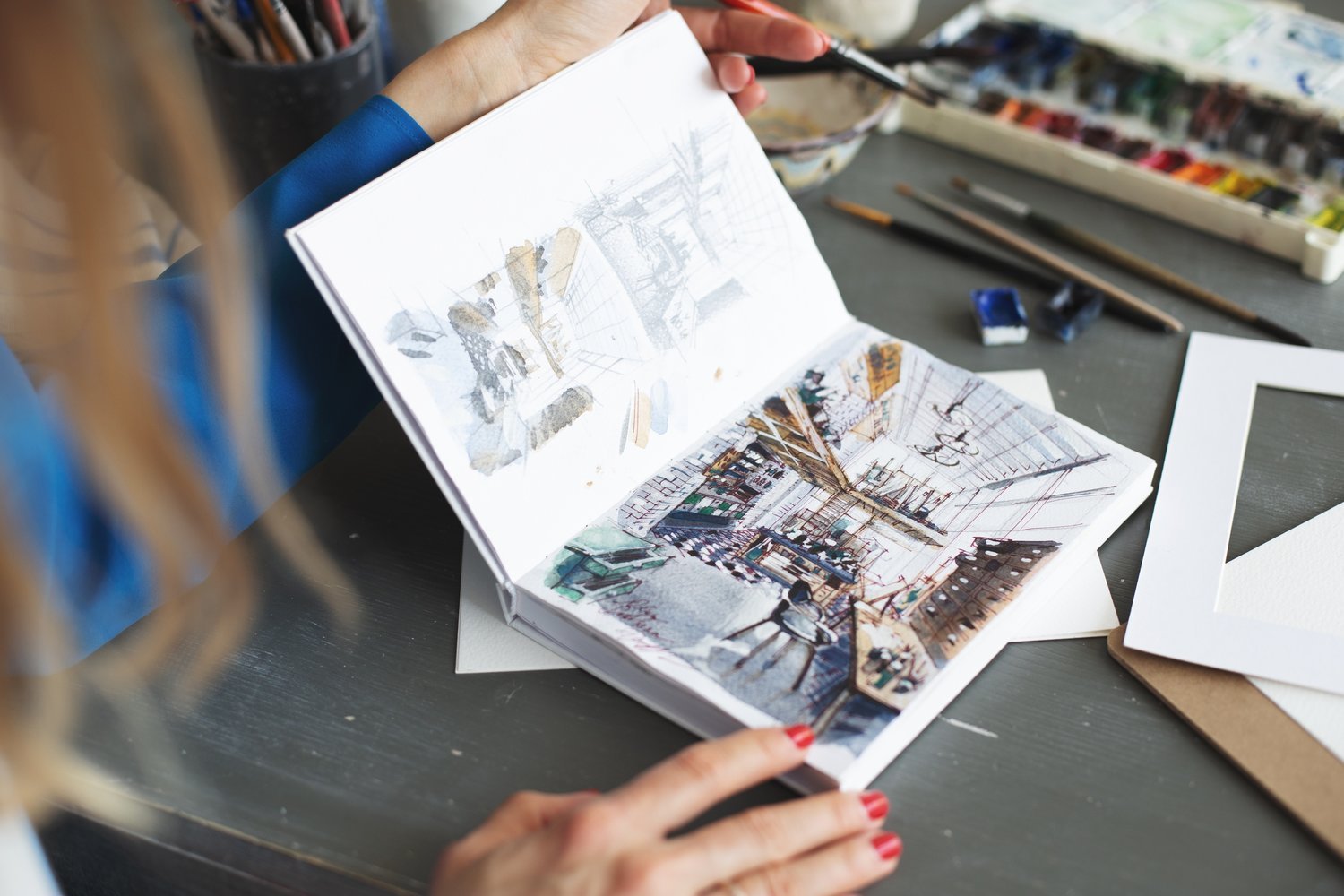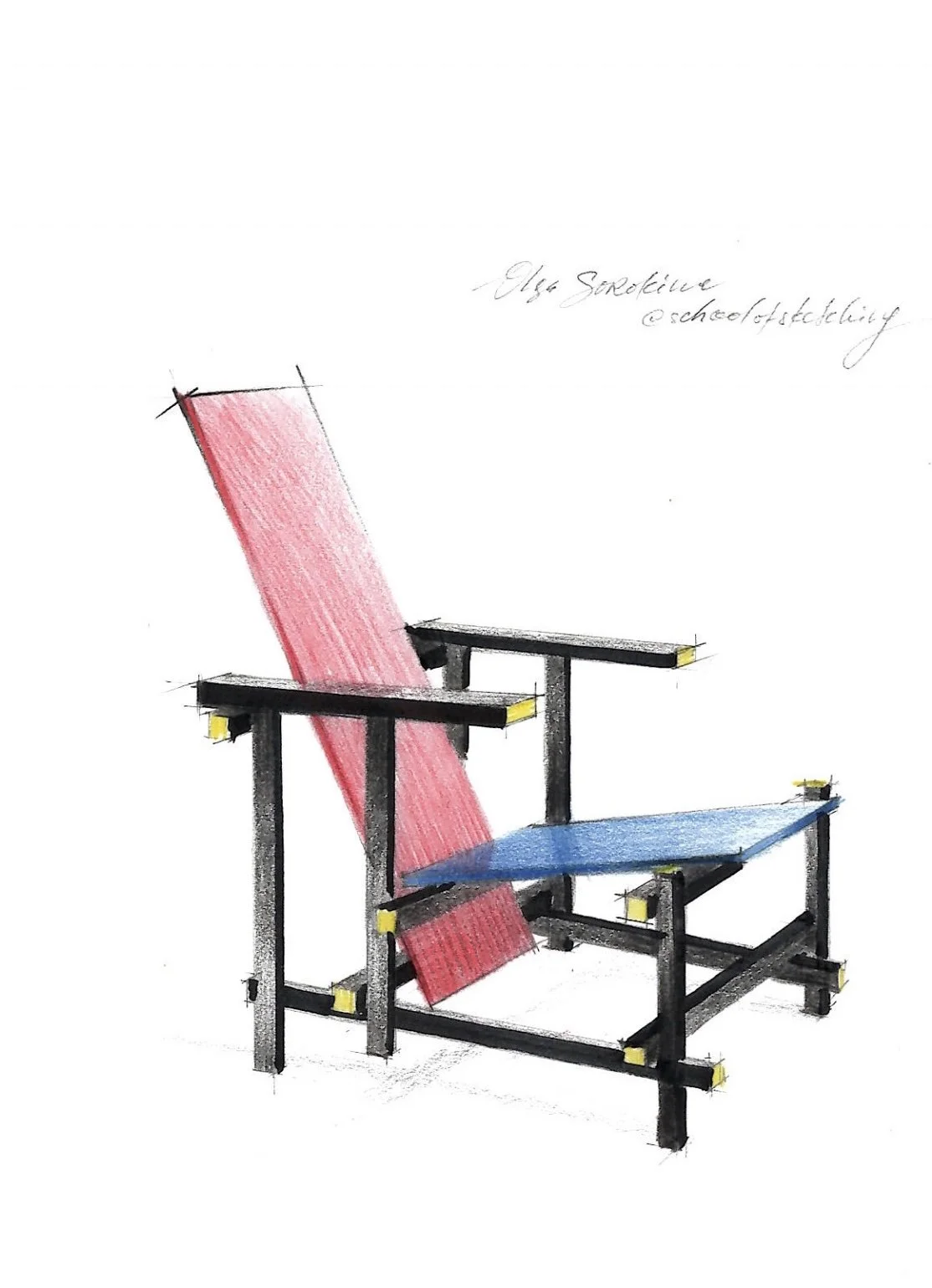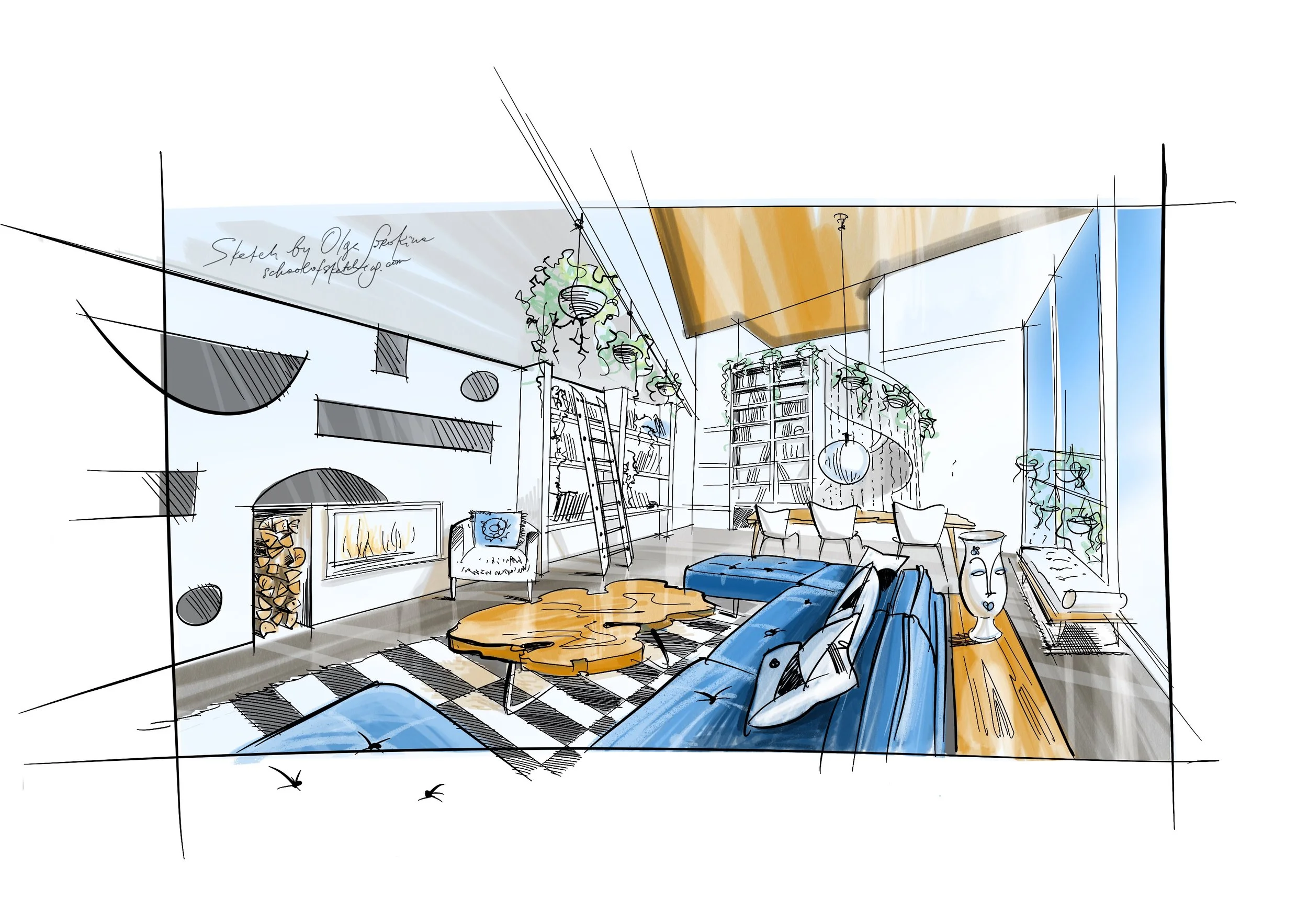In this article, I'd like to underscore the significance of incorporating a value study into your interior drawings.
It's quite common to observe beginners using a pleasing colour palette for their sketches. However, a key aspect often overlooked is the variation in tones. Without a thoughtful value study, the sketch tends to appear flat and lacks the dynamic contrast that brings it to life.
The secret to enhancing your interior sketches lies in mastering the art of value study.
“Sketching teaches us to become very observant, to see nuances.”
A “value study" in drawing refers to the exploration and representation of different shades of light and dark within an artwork.
When it comes to interior drawing, understanding and effectively depicting values are crucial for creating a sense of depth, lighting, and atmosphere.
Here is a quick guide on how to approach a value study for interior drawing:
Identify Light Sources:
Determine the primary light sources within the interior space. This could be sunlight streaming through windows, artificial lighting from lamps, or a combination of both.
Note how the direction and intensity of light affect different surfaces and objects in the room.
Define Major Forms:
Identify the major forms and shapes within the interior, such as furniture, architectural elements, and decorative items.
Use values to accentuate the three-dimensional qualities of these forms. Consider how light and shadow play across surfaces.
Establish a Focal Point:
Decide on a focal point within the interior. This could be a specific area, object, or piece of furniture that you want to draw attention to.
Use a higher contrast around the focal points or key elements in the foreground, making it stand out within the composition. This not only directs attention but also adds to the perception of depth by making those elements visually prominent.
Consider Material and Texture:
Different materials and textures within an interior space will reflect light differently. Pay attention to how values can convey the characteristics of materials, such as the shine of polished surfaces or the softness of fabrics.
Experiment with variations in shading to depict a variety of textures realistically.
Balance Light and Shadow:
Achieve a balance between light and shadow to create a visually appealing composition. Avoid overly bright or dark areas unless intentional for artistic purposes.
Use mid-tones to connect light and shadow, allowing for smooth transitions and a cohesive overall look.
Utilize Reflections:
If there are reflective surfaces like mirrors or glossy furniture, consider how they interact with light sources and surrounding elements. Reflections can enrich your value study.
Experiment with Different Times of Day:
If possible, explore how the lighting changes throughout the day. Different times of day can significantly impact the mood and atmosphere of an interior space (think here “Haystacks” by Claude Monet).
Morning and evening light, for example, may create long shadows and warm tones, while midday light can be brighter and more direct.
Create Atmosphere:
Use values to establish the overall atmosphere of the interior. A well-executed value study can convey the mood of the space, whether it's cozy and intimate or spacious and airy.
Practice Depth and Perspective:
Use values to emphasize the sense of depth and perspective in the room. As objects or surfaces recede into the background, gradually decrease the intensity of values. Darker values in the foreground will contrast with lighter values in the distance, creating a sense of depth. Emphasize the contrast between light and shadow in the foreground. Remember that objects in the distance often have softer, less defined edges due to atmospheric effects.
Refine Details:
Pay attention to details in your interior drawing. Use values to highlight intricate details in furniture, patterns on surfaces, and other elements that contribute to the overall realism of the scene.
Remember that achieving depth and perspective in a value study requires a balance between accurate observation and artistic interpretation. Experimenting with these techniques will help you create interior drawings that not only capture the spatial relationships but also convey a convincing sense of depth through the effective use of values. Observe real interior spaces, study how light interacts with various elements, and practice consistently to enhance your skills in depicting values in interior drawings.
P.S. Hope you enjoyed this article, please share it on your social media so more Creatives can learn about the importance of value study and interior sketching.
© Olga Sorokina, 2024
Drawings from my online course on watercolour techniques in interior sketching. Learn more here
Transform your interior drawings with depth and perspective in my online course “Interior Sketching in Watercolour“
See my blog archive: click here

